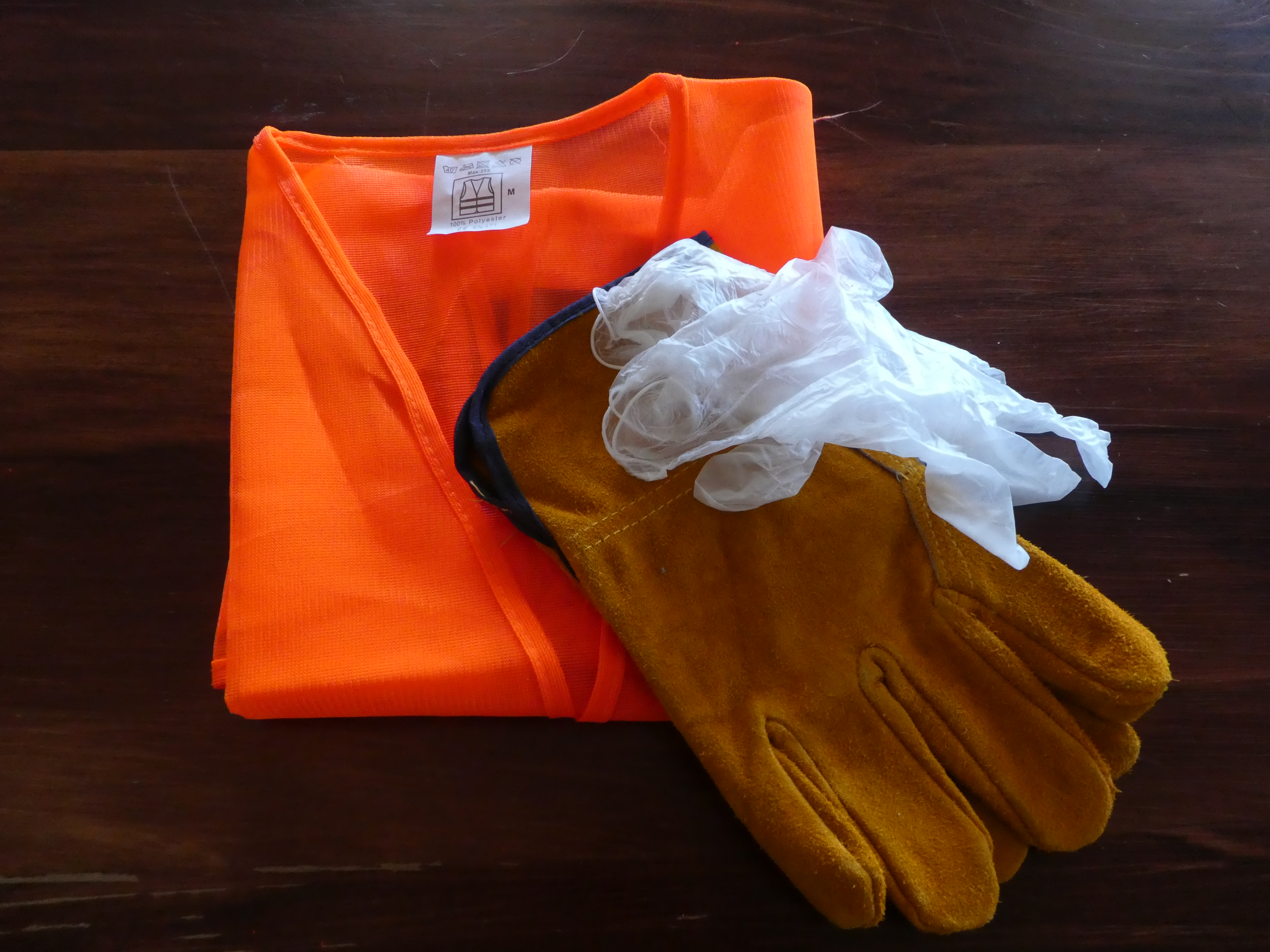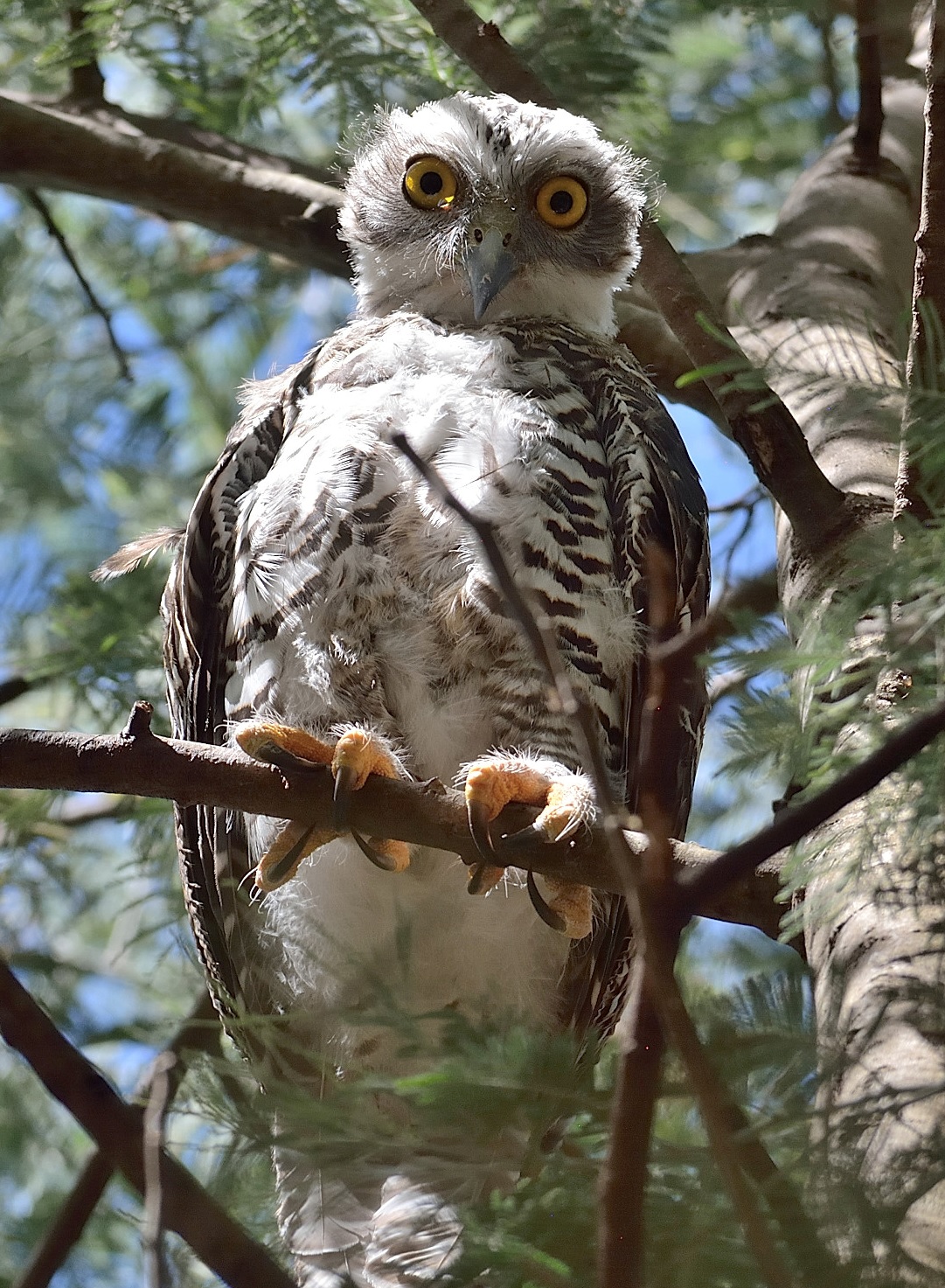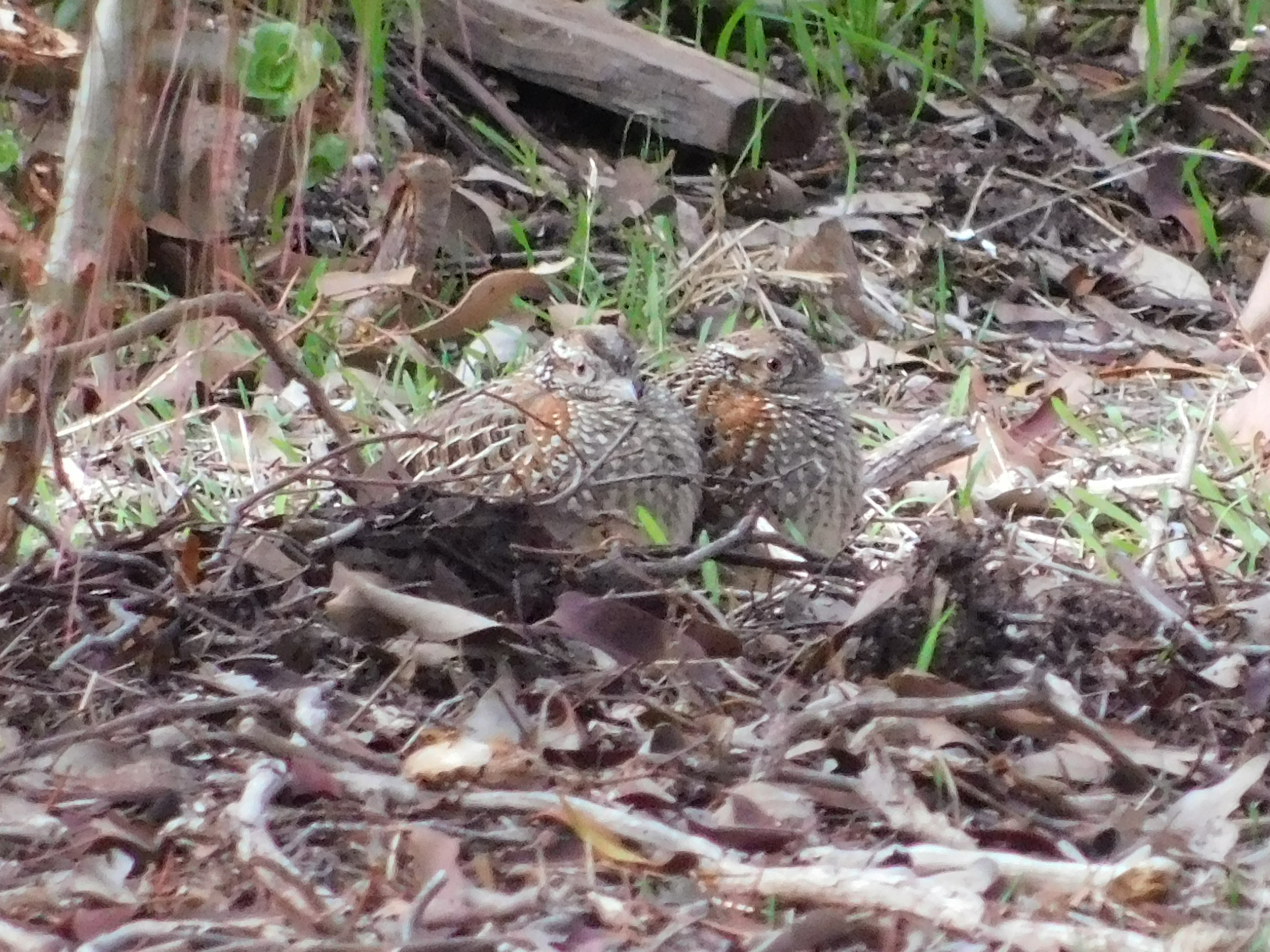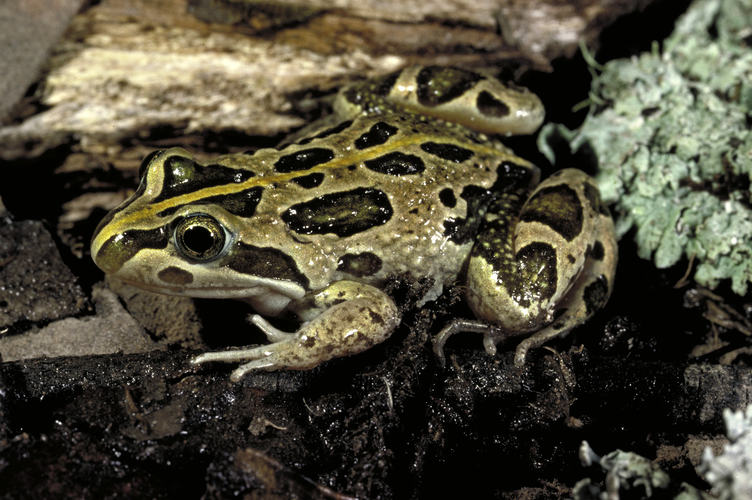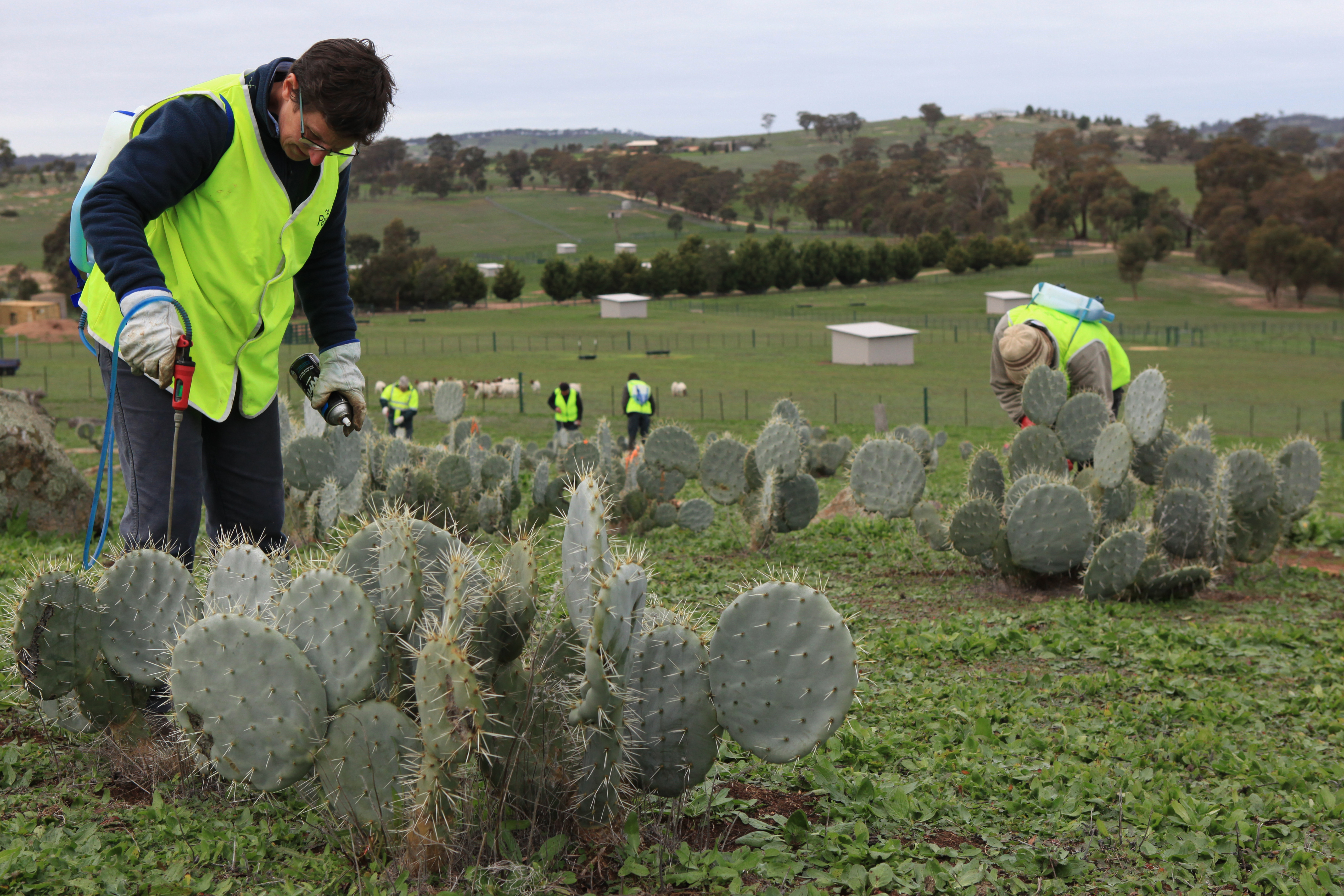Wildlife Rescue Kits
Posted on 27 June, 2018 by Frances
Connecting Country has put together some Wildlife Rescue Kits to keep in our vehicles, for use should we encounter an injured animal.
It was fun gathering up all the bits and pieces. Many we found at the op-shop or around the office, some we had to purchase.
 The op shop had some beanies, old towels, pillow cases, sheets and blankets. These are all useful to cover a small creature to help it to be calm. Sheets may be needed for larger mammals.
The op shop had some beanies, old towels, pillow cases, sheets and blankets. These are all useful to cover a small creature to help it to be calm. Sheets may be needed for larger mammals.
The storage box with newspaper and a sturdy stick on the bottom doubles as a safe place to secure an injured bird.
Before attempting to rescue an injured animal, it’s essential to think about your own safety. We put in some safety equipment, including a fluoro vest, sturdy gloves, disposable gloves and hand sanitiser. There’s a water bottle and cotton cloth to clean up and wash hands with afterwards.
Some useful things we included:
- A
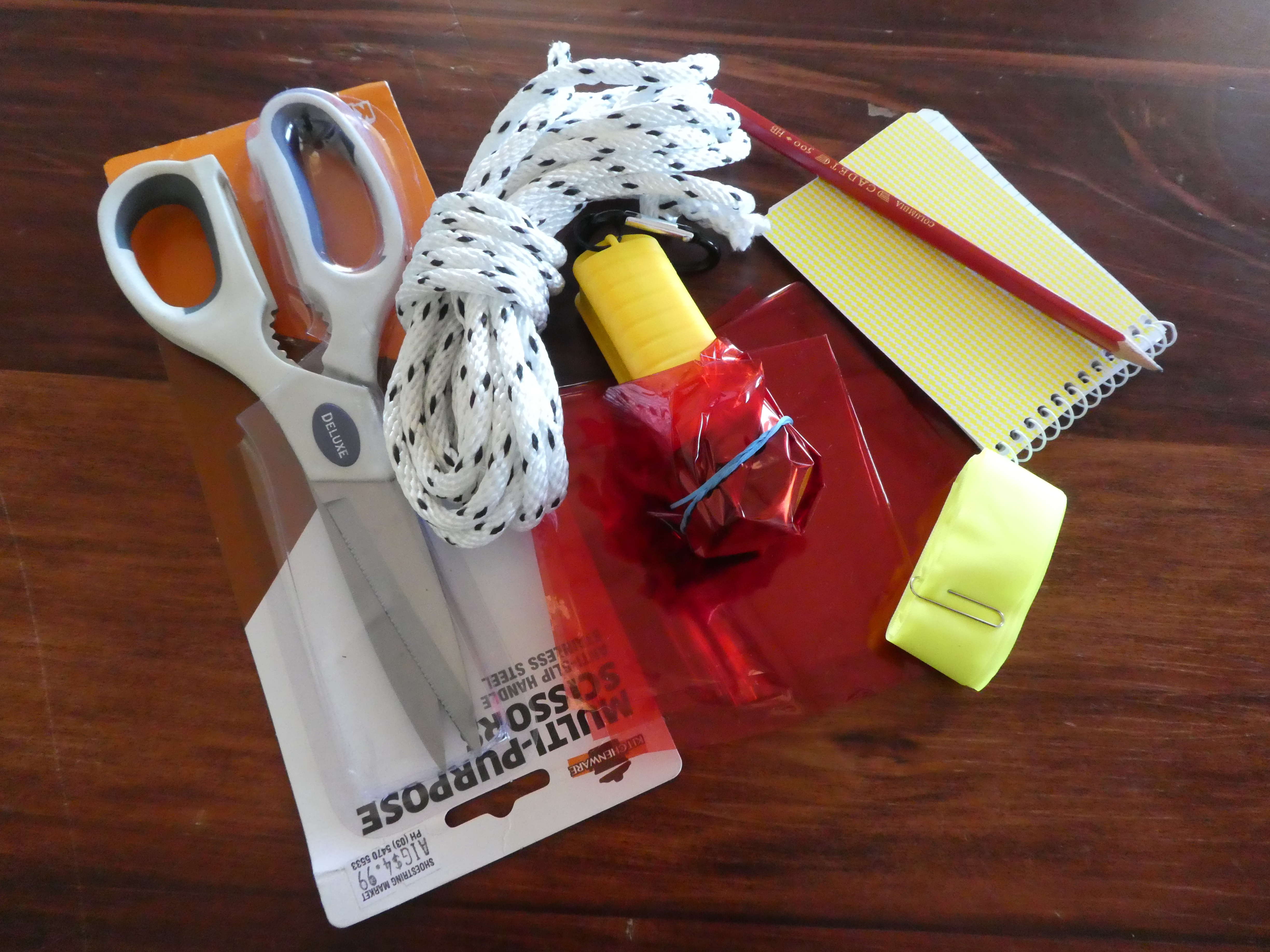 list of numbers to call and things to consider before handling injured wildlife (for our list see wildlife-rescue-numbers-to-call)
list of numbers to call and things to consider before handling injured wildlife (for our list see wildlife-rescue-numbers-to-call) - Flagging tape for tying to a tree to mark the location in case you can’t stay
- Soft rope or string
- Newspaper
- Sharp kitchen scissors
- Pad and paper
- Torch and red cellophane
Other items that could be included:
- Hot water bottle or heat pack
- Small inexpensive binoculars
- Pliers
We packed it all in a pillow case which fitted well inside an empty office paper box.
Many thanks to Margaret for putting together our kits. If you regularly drive on country roads, you might consider making your own kit. Please take all rescued wildlife to a vet or registered wildlife carer as quickly as possible.
Free disposal of Wheel Cactus at Maldon Transfer Station
Posted on 21 June, 2018 by Asha
The Tarrangower Cactus Control Group (aka Cactus Warriors) has asked us to distribute the following message:
Thanks to ongoing funding from Mount Alexander Shire Council, Wheel Cactus plants can be disposed of FREE at the Maldon Transfer Station. This is a fantastic incentive to dig up Wheel Cactus plants while they’re still small and before they’ve started producing fruit, and more seeds. It also means less herbicide chemicals have to be paid for and used.
Another reminder, if you have any injector guns that are clogged up, no longer working and sitting idle in the shed, please return them to us for repair. Our ‘injector fairies’ love fiddling with the bits and are happy to swap them for a working model. You can bring the old injectors to our next field day or call or text ‘fairy Jan’ on 0400 973 528.
Our next Community Field Day is on Sunday 24 June, starting at 10:30 am. Come and join us for a morning in the fresh air and learn how best to destroy Wheel Cactus. The location this month is in Lakey’s Road, Shelbourne, along the old railway line, about 12 km north of Maldon. To get there, follow Bridgewater Road out of Maldon, turn right at the prison and follow Maldon-Shelbourne Rd. until the end of the sealed road, then turn left into Lakey’s Rd. The route will be well signposted. The morning’s activities end with a delicious BBQ lunch and friendly chat. The event is family friendly but children must be accompanied by a parent at all times. If you have any queries please contact us via our website at www.cactuswarriors.org
Work with Connecting Country – project officer role
Posted on 19 June, 2018 by Frances
Invitation for expressions of interest to work with Connecting Country – Project officer role
We’re announcing an exciting opportunity to work with Connecting Country. With new projects starting and staff leave planned, we’re inviting expressions of interest from people with relevant skills and enthusiasm. This is an opportunity for a hardworking person with experience in natural resource management to join our established community-run organisation.
Connecting Country
Connecting Country works with landholders and community groups to restore landscapes across the Mount Alexander Region, on both public and private land. Further information about our work is available on our website (www.connectingcountry.org.au).
Project officer role
The Project officer is responsible for managing the on-ground aspects of projects. This includes ecological site assessments, property management plans, technical advice, practical assistance with on-ground works, and support to landholders to help them protect and manage remnant vegetation and habitat on their land. Typical management actions include grazing exclusion, fencing to protect natural regeneration, revegetation, and control of pest plants and animals.
This is a flexible part-time role (up to four days per week) based in Castlemaine, Victoria. It is a short-term (ten month) contract position, with contract extension subject to funding availability.
This position requires the ability to:
- Identify local native and introduced flora species.
- Engage and communicate with people from a range of backgrounds.
- Write clearly and concisely.
- Work independently and as part of a team, being flexible as the situation demands.
- Manage time and workload, managing multiple projects and tasks simultaneously to meet deadlines.
- Exercise good judgment, make ethical decisions and set priorities.
- Drive a manual four-wheel drive vehicle and tow a trailer (with training if required).
Tasks will include:
- Engage landholders, Landcare groups and other community members regarding projects.
- Visit properties across the Mount Alexander Shire to assess their suitability for inclusion in our projects.
- Conduct ecological assessments of properties, interpret ecological mapping, record plant species lists, assess weeds, and prepare planting lists.
- Identify and recommend management actions to protect remnant vegetation, and promote biodiversity and habitat quality.
- Help develop and manage project budgets and schedules.
- Manage contractors to implement on-ground works such as fencing, revegetation, and weed and rabbit control.
- Prepare property management plans describing the property condition and proposed management actions, to help landholders manage their properties for wildlife.
- Prepare simple maps using Google Earth or other mapping software.
- Manage ordering and delivery of tubestock plants for revegetation.
- Provide advice and ongoing technical support to landholders.
- Implement project health and safety requirements.
- Communicate with team members, land managers, community groups, contractors and suppliers as required.
- Prepare clear, timely and informative reports on project activities.
How to express interest
Please provide your written expression of interest by email to info@connectingcountry.org.au by 1 July 2018, including a brief application letter summarising your suitability for the role and curricula vitae demonstrating your relevant skills and experience.
For further information contact Frances on 03 5472 1594 (Monday to Thursday) or info@connectingcountry.org.au.
Powerful Owl Chat – Thursday 28 June 2018
Posted on 19 June, 2018 by Tanya Loos
Come along and share stories about Powerful Owls at a ‘Powerful Owl Chat’ in Maldon.
Garry Cheers will tell us about Powerful Owl food, habitat, breeding, behaviour and giving owls space during breeding season. Geoff Park will show owl images and talk about what you can do to connect with your local environment.
Bring along your photos and owl knowledge to share. There will be plenty of opportunity to ask questions and share observations. All welcome.
Thursday 28 June 2018 from 7.00 – 8.30 pm
Maldon Neighbourhood Centre (1 Church St, Maldon VIC)
For inquiries please contact Forest Keegel on 0402 035 521 or forestkeegel@gmail.com
Makarrata Garden Tarrangower MaGaTa is happening on Dja Dja Wurrung Country in Maldon. It’s a a community engaged sculpture project to research habitat of Powerful Owl and Duan (Brush Tailed Phascogale), and educate ourselves about the history of Dja Dja Wurrung people and celebrate their living Culture.
CC Membership Renewal for 2018-19 – now available online
Posted on 19 June, 2018 by Tanya Loos
Connecting Country’s membership renewal drive for the 2018-19 has commenced, and we are happy to announce that it is simpler than ever. By following this secure link (CLICK HERE) or by following the secure links from our home page, you can now renew your membership online in a couple of minutes.
Connecting Country membership is free and has lots of benefits. Being a member:
- Demonstrates your support for our activities, and our work towards an increasingly healthy natural environment within the Mount Alexander Region. The support of good membership numbers is critical when we apply for grants and other external support.
- Provides insurance cover when you attend our events.
- Allows you to vote at our Annual General Meeting – planned for October 2018.
- Provides free access to our events and resources, including borrowing monitoring equipment.
Please encourage friends and contracts who are interested in the local environment to consider becoming a member. For people applying to become members for the first time, please use the same form. New applications will then be presented at the next monthly Committee of Management meeting before your membership is formalised.
If you would prefer a hard copy membership form instead, please contact us (info@connectingcountry.org.au) to request an emailed PDF or a posted form.
Fungi presentation and excursion with John Walter – Friday 8 June 2018
Posted on 6 June, 2018 by Tanya Loos
The guest speaker for the June general meeting of the Castlemaine Field Naturalists Club is Drummond-based naturalist, John Walter. His presentation is about FUNGI: the rare and the where and how you can make a difference.
John writes:
‘I have an extensive library and will bring some of my collection of fungi books with me for members to examine. I would also like to demonstrate some of the web-based resources available for people to use. FungiMap has a focus on some rare or rarely seen species and I have been fortunate enough to make some very interesting fungal finds so they will form a key part of the presentation and I will also show some of the incredible fungal diversity to be seen in our region.’
John’s presentation is on Friday 8 June from 7.30 pm in the Fellowship Room on Lyttleton St, Castlemaine VIC (behind the Uniting Church, next door to the Castlemaine Art Museum). There is no cost for entry, and both members and visitors of all ages are welcome and encouraged to attend.
John will also kindly lead the excursion the following day, to search for fungi in the field. The destination is likely to be at Blackwood, but this is to be confirmed at the meeting on Friday evening.
The excursion will depart on Saturday 9 June at 1.30 pm sharp from the Octopus U3A building on Duke St, Castlemaine (opposite the Castle Motel). Car pooling will be available, and please bring along some afternoon tea. Again, visitors and members all welcome and encouraged.
For further information please contact Castlemaine Field Naturalists Club.
Nest box workshop # 2 – Sunday 17 June 2018
Posted on 6 June, 2018 by Tanya Loos
If you already own nest boxes, or want to set some up on your property, come along to a workshop with nestbox builder and naturalist Miles Geldard. Our nest box workshop in May was extremely popular, so we are holding another similar event, but at a different location.
This workshop will be held at a beautiful Trust for Nature property at Sedgwick, north of Castlemaine. Miles Geldard will shares his extensive knowledge on the design, construction, installation and monitoring of nest boxes for wildlife. Landholder Tamsin Byrne, and Connecting Country’s Tanya Loos, will also talk briefly about habitat restoration and local birdlife. The event includes a light lunch, indoor presentation and nestbox check using a special camera.
Sunday 17 June 2018 from 10:30 am to 3:00 pm
Please RSVP, including any dietary requirements, by Wednesday 13 June to Tanya Loos by email (tanya@connectingcountry.org.au) or phone (03 5472 1594).
Attendance is free. We also have a very special door prize for a lucky attendee!
A map to the workshop location will be provided when you book.
As this is a partly outdoor event, please dress warmly, and wear shoes and clothing appropriate for walking in the bush. In the event of severe weather we will hold the workshop inside.
Camp Out on the Mount 2018 (minus the camp out)
Posted on 30 May, 2018 by Asha
Success! After one and a half Camp Outs cancelled due to severe weather warnings, we were at last able to run most of the activities we had planned on Saturday 12 May.
It was a chilly day, but a warm fire provided by Parks Victoria created a cozy space to gather. Early birds Duncan and Frances were up on the mount before anyone else making sure the kettle was going and we had hot drinks available all day long.
We kicked off the day with a nature walk with Connecting Country’s Bonnie Humphreys. Before even leaving the campground, we were lucky to see both Scarlet and Flame Robins enjoying the sun that peeked through the clouds. We came back in time to listen to George Milford’s famous talk on the history of Mount Alexander.
MP Maree Edwards then launched the new Camp Out on the Mount 2018 t-shirt with Nick and Murray from Castlemaine Secondary College, who designed the t-shirts with fellow students Nioka and Des. There are a limited number of free Camp Out on the Mount 2018 t-shirts left in sizes XS, L, and XL. If you would like one, please email asha@connectingcountry.org.au or drop into our office.
Next up was something a little different from the Little Habitat Heroes and the Macapellas. After treating us to their rendition of Eva Popov’s ‘Seeds that grow’ (song written about the Little Habitat Heroes revegetation project on Leanganook) they invited everyone to join in singing around the campfire.
Our afternoon activities were a wildlife display by TZR Reptiles and Wildlife, and a Leanganook Scavenger Hunt run by Nioka, Nick, and Murray. The wildlife display went down a treat, with the Carpet Python and Barn Owl being special favourites (as you can see from the smiles in the photos below!) The scavenger hunt was challenging and fun, with bonus points for those who came up with a name for their Landcare Superhero Team!
As a perfect finish to the day, the Mellick-Cooper family set up a damper making station and got everyone cooking damper over the coals, which were now glowing and ideal for this purpose.
So many people helped make this event possible, we almost need a whole other blog post dedicated to thank yous! We have many community groups and individuals to thank for making the 2018 Camp Out happen, both on the day and behind the scenes, including the Camp Out Advisory Group, Harcourt Valley Landcare, Little Habitat Heroes, MP Maree Edwards, the Mellick-Cooper family, Parks Victoria, Friends of the Box-Ironbark Forests, Nalderun Upper Loddon Group, Dja Dja Wurrung Clans Aboriginal Corporation, Castlemaine Secondary College students (Nioka, Nick, Murray, and Des), Harcourt Lions Club, Tarrangower Cactus Control Group, TZR Reptiles and Wildlife, the Connecting Country team, and all those who stepped up to help out on the day.
Scroll through to enjoy a gallery of photos from the day.
This year’s Camp Out on the Mount is supported by funding through the Victorian Landcare Program. Our nature walk was supported by DELWP’s Biodiversity On Ground Action (BOGA) program.
Joint Management Plan for the Dja Dja Wurrung Parks: provide feedback
Posted on 30 May, 2018 by Tanya Loos
Community groups and individuals are invited to take part in community consultation regarding a joint management plan for six parks in Central Victoria.
From the Parks Victoria website:
Parks Victoria has a vision to manage all parks in their surrounding landscapes, in partnership with Traditional Owners, and other government and non-government organisations and community groups. Parks Victoria is currently supporting the Dhelkunya Dja Land Management Board to involve the community in developing a plan for the joint management of the six Dja Dja Wurrung Parks held by the Dja Dja Wurrung People as Aboriginal Title.
The Draft Joint Management Plan for the Dja Dja Wurrung Parks covers the following parks:
- Greater Bendigo National Park
- Hepburn Regional Park
- Paddys Ranges State Park
- Kara Kara National Park
- Kooyoora State Park
- Wehla Nature Conservation Reserve

Dja Dja Wurrung Traditional Owners meeting on Country in 2017 to participate in the planning for the Dja Dja Wurrung Parks
It is expected that this joint planning process will extend to other parks within the Mount Alexander Shire in the future.
To read the plan, make a submission, or access an online survey about the plan, click here: Dhelkunya Dja Land Management Board
All submissions must be made by 19 June 2018.
Painted Button-quails in the garden
Posted on 29 May, 2018 by Tanya Loos
Connecting Country staff member Bonnie Humphreys has seen small, quail-like birds wandering around her garden for weeks, even on her doorstep. Until now, they’ve escaped Bonnie’s efforts to capture a photo and confirm identification as Painted Button-quail! The two birds seen here were resting quietly together.
Button-quails are a truly Australian group of birds. Although they look a lot like quails, DNA analysis suggests that button-quails are quite distant from all living groups of birds. Their behaviour is certainly very unusual!
Unlike most birds, it’s the brightly coloured female who calls, and attracts a male. They are polyandrous, with one female mating with several males in an area. After mating, the female builds a domed nest near the ground in a shrub or grass tussock, and lays three or four small white eggs. The male then incubates the young until hatching. Once hatched, the tiny little chicks fledge right away and the male feeds them for the next ten days or so. After this, the young button-quails can fend for themselves.
The birds pictured above could be either males, or immature birds. In females, the reddish patch is brighter. However, the depth of the colour red is quite variable according to light conditions and the position of the bird. Hence it’s quite tricky to identify the sex of the bird. (Happy to hear local birder expert opinion on this one!)
Bonnie’s visiting button-quails are a group of three birds, and the Handbook of Australian and New Zealand birds says they are most often seen in small family groups. At this time of year, breeding has finished, so maybe they are just being companionable and foraging together until the female starts her ‘booming’call.
Their foraging technique is also most unusual. Painted button-quails often feed in pairs, in grasses and leaf litter on the ground. They scratch and glean, spinning on alternate legs to create distinctive circular depressions, known as platelets. Platelets are often the only visible sign that the bird is present. The photo below shows the typical look of platelets in bushland with plenty of leaf litter.
There’s been extensive feeding activity in leaf litter and lawn areas at Bonnie’s place. It was hard to capture on camera the sheer extent of the ground being worked over by these enthusiastic little birds.
Painted button-quails are a member of the threatened Victorian Temperate Woodland bird Community. They are notoriously difficult to capture during typical (20 minute, 2 ha) bird surveys, so we welcome any sightings and observations. You can download a sightings sheet here, and let us know where and when you’ve seen button-quails, or their platelets.![]()
In 2011, Echidna Walkabout Tours captured this amazing footage of a Painted Button-quail foraging in leaf litter in urban Port Melbourne! Do watch the whole video because at the end the female puffs herself up like a frog and starts calling her booming call. The low frequency call is difficult to hear on the video, but you can see the amazing behaviour!
Come frogging for World Environment Day – 5 June 2018
Posted on 23 May, 2018 by Tanya Loos
Celebrate World Environment Day 2018 with local ecologist Karl Just and Connecting Country on a special evening ‘frogging’ workshop.
Karl Just will share his extensive knowledge of our local frogs, and help participants learn how to identify frogs by their calls, and by sight. The evening will also cover how we can look after frogs and their habitat. The workshop is free, and includes hot drinks and snacks and a frog identification guide.
When: Tuesday 5 June 2018 from 4:30 to 7:30 pm
Where: Meet out the front of Newstead Community Centre (9 Lyons St, Newstead VIC) and carpool to a private property in Strangways
What to bring: Sturdy shoes, long pants, warm and weather-appropriate clothes, torch (as it will be dark around 5:30 pm)
The workshop will be strictly limited to fifteen participants so make sure you book!
RSVP: to Asha by Monday 4 June to asha@connectingcountry.org.au
Enquiries: (03) 5472 1594
Wheel Cactus 2018 Season Launch
Posted on 21 May, 2018 by Asha
The 2018 season of Tarrangower Cactus Control Group field days will be launched along Baringhup Road (near Maldon) this coming Sunday 27 May. President Lee Mead has asked us to distribute the following message:
The Tarrangower Cactus Control Group continues to ‘wage war on Wheel Cactus’. We’re very pleased that Stephen Gardner, our new Tarrangower Ward Councillor for Mt. Alexander Shire, will be ‘cutting the ribbon’ for the launch of our 2018 season of Community Field Days, on Sunday 27 May at 10:30 am.
Thanks to our sponsors and supporters, including Parks Victoria, Mount Alexander Shire Council and North Central Catchment Management Authority, we will hold these field days on the last Sunday of every month from May to October, to demonstrate how best to destroy Wheel Cactus.
Our State MP for Bendigo West, Maree Edwards, is also coming along to help motivate us to kill more Wheel Cactus, so please come and join us for a rewarding morning in the outdoors. We supply all the necessary equipment. All you need are sturdy shoes, long sleeves and pants and a hat.
The location this month is in Baringhup Rd, a few kilometers north of Maldon. To get there, follow Bridgewater Rd out of Maldon and turn left to Baringhup, and the property will be on the left opposite Hayes Rd. The route will be well signposted. The morning’s activities always end with a delicious BBQ lunch and friendly chat. These events are family friendly, but children must be accompanied by a parent at all times. If you have any queries please contact us via our website at www.cactuswarriors.org
Nestbox workshop – a sweet success!
Posted on 17 May, 2018 by Tanya Loos
Connecting Country’s Nestboxes for Wildlife workshop on Sunday 6 May 2018 was blessed with fine weather, a great presenter, and sightings of a little sugar glider family via our special nestbox camera. The workshop was held at a local Trust for Nature property owned by Jan Hall, a long-time Connecting Country friend and supporter. Jan kindly opened her home so we could view a presentation inside, and enjoy an al fresco lunch under the grapevines.
Our presenter, Miles Geldard, has had a long career in natural resource management, including working as a Land for Wildlife Officer and park ranger. But most relevant for us, Miles shared his in-depth understanding of the design, construction, installation and maintenance of nestboxes, gained over many years of observation and trail-and-error.
Information from Miles’ presentation will be summarised and made available as a fact sheet on our website.
Here is some of the wonderful feedback we received following the workshop:
- ‘Loved the day. Will inspire us to put some boxes up on our 7.5 acres.’
- ‘The finer points from Miles’ experience were very helpful.’
- ‘Loved the ad hoc discussion in the field of what’s happening with the boxes. Damage, placement, etc.’
- ‘Learnt new things about nesting boxes (been making them for thirty years).’
This workshop was very popular and was fully booked. Therefore we are holding a repeat workshop on Sunday 17 June 2018. Bookings are essential. If you would like to attend, please contact us by email (tanya@connectingcountry.org.au) or phone (5472 1594).
Many thanks to Miles, Jan, Asha, Frances and Duncan for their help on the day! And many thanks to the Wettenhall Environment Trust for the funding that made this workshop possible.
Please enjoy this gallery of photos from the afternoon.
Eastern Yellow Robin Talk – Thursday 31 May 2018
Posted on 16 May, 2018 by Tanya Loos
All are welcome to join Lana Austin of Monash University in Newstead next week as she unpacks the bizarre genetic story of what is known (and not known) about the Eastern Yellow Robin. Lana will also explain how volunteers can participate in this fascinating genetic study.
When: Thursday 31 May, 2018 at 7 pm
Where: Newstead Community Centre: the Mechanics Hall (Lyons St, Newstead VIC)
This is a free event, with no need to book!
We featured the Eastern Yellow Robin project on the blog last week – read the story here if you missed it. And click here for a poster about the event.
Moths of the Box Ironbark forests: talk on Thursday 17 May 2018
Posted on 14 May, 2018 by Tanya Loos
Newstead Landcare are delighted to host Steve Williams as guest speaker at their next meeting on Thursday 17 May. The talk will start at 8 pm at Newstead Community Centre (9 Lyons Street, Newstead VIC) and will go for about 45 minutes, with plenty of time for questions and at the end. Everyone is welcome to attend. A gold coin donation will help cover costs.
Steve Williams has been exploring the biology of Lepidoptera (moths and butterflies) in Box-Ironbark forest ecosystems for the last decade. During that period he has documented the life histories of nearly 400 moth species, many for the first time. This work, along with nightly recording of adult moth activity over the same period, is providing important insights into ecosystem functions.
Steve will share the fascinating life stories of a few of these amazing animals, and discuss how understanding this biology has implications for land and biodiversity management in Box-Ironbark forests.
Caught on camera!
Posted on 10 May, 2018 by Tanya Loos
This remarkable photograph shows a Yellow-footed Antechinus bounding up a log with an Australian Magpie in hot pursuit. It was taken by a trail camera – amazing timing!
In this case, the antechinus escaped being breakfast, running so fast all of its paws are in the air! It is great to see the tables turned on these adorable but voracious hunters (see pictures of a Yellow-footed Antechinus preying upon a grey fantail here).
The landholders who sent us the photo said ‘These wildlife cameras are great! We catch so much and are able to watch so many different animals, birds, reptiles, insects, etc. and what they get up to each day.’ Lynne and Ric live on a beautiful woodland property east of Maldon, and are keen bird surveyors.
If you would like to see what lives on your property, why not borrow a wildlife camera from us? We are happy to loan wildlife cameras to our members – usually for a three week period. To book one, email tanya@connectingcountry.org.au or phone us at the office on 5472 1594.
Many thanks to Lynne and Ric for the amazing photo.
Swift Parrot surveys on 19 and 20 May 2018
Posted on 10 May, 2018 by Tanya Loos
Swift Parrot survey season is upon us again, with a monitoring weekend coming up on 19 and 20 May. BirdLife Australia’s Swift Parrot monitoring program is essential for assessing where our beloved swifties are, what resources they are feeding upon, and their numbers.
Our regional coordinator for swift parrot surveys is Beth Mellick from Wettenhall Environment Trust. If you would like to be involved in this Autumn’s swift parrot count, contact Beth via email to be assigned a site (email: beth@wettenhall.org.au). And regular watchers – don’t forget to let Beth know where you are surveying so we can make sure we cover our whole region!
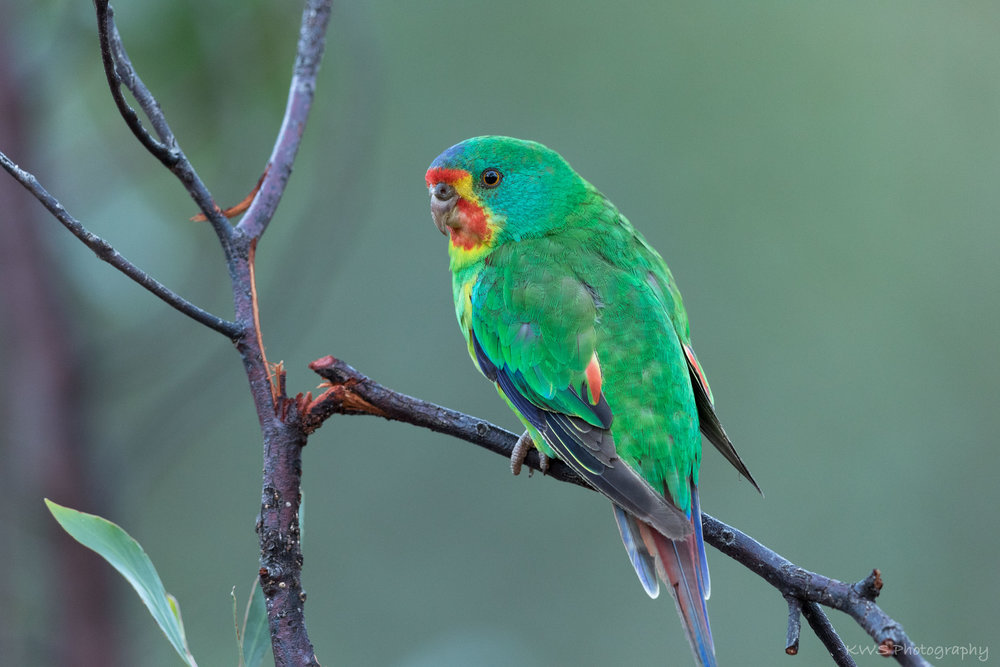
This beautiful Swift Parrot was photographed by Connecting Country member Micheal Gooch, visiting his bird bath in Clunes (www.outsidefourwalls.com)
Chris Timewell (formerly of Connecting Country and now with BirdLife Australia) provided this update on Swift Parrot (and Regent Honeyeater) surveys:
We are again seeking volunteers to search for both species across Victoria, NSW, ACT and Queensland, as Swift Parrots make their way up to the mainland from Tasmania and Regent Honeyeaters move about the landscape in search of flowering Eucalypt trees to feed on. The May 2018 Swift Parrot and Regent Honeyeater survey weekend is coming up soon on May 19th and 20th. As always, we are happy for people to undertake their searches up to a week on either side of the survey weekend. Opportunistic sightings from any time of the year are also welcomed.
So far this season there have been scattered Swift Parrot sightings from across its mainland range – with the highest clusters around the north-eastern fringes of metropolitan Melbourne and returning birds to favourite haunts such as Mt Majura (ACT) and the Cessnock forests of the Lower Hunter (NSW). There are Spotted Gums noted flowering on the South Coast of NSW (e.g., Marramarra National Park), Coastal Grey Box is flowering in the Lower Hunter and Swamp Mahogany is starting to flower in coastal areas – each of which are attracting large number of lorikeets and other nectar-feeders.
If you are new to the plight of this Critically Endangered parrot, the BirdLife website has a profile on swift parrots here.
Learning about caring for large old trees
Posted on 3 May, 2018 by Tanya Loos
On Saturday 28 April 2018, over 30 people gathered at the Guildford Saddle Club to learn about the value and care of our old eucalypt trees. This was a joint Connecting Country and Mount Alexander Shire event, and part of the council’s Sustainable Living Series. Tanya Loos (Connecting Country) was the presenter, and we also heard from Bonnie Humphreys (Connecting Country), Kylie Stafford (Mount Alexander Shire Council) and Bev Philips (Maldon Urban Landcare Group). One of the participants, Vicki Webb kindly volunteered to write this post about the workshop. Thanks Vicki, and to all involved in this most successful workshop. Further information about caring for large old trees will be posted on the Connecting Country website in the next couple of weeks.
Is there anything old eucalypts can’t do? They are a keystone habitat structure in Mt Alexander Shire, providing resources critical to species diversity – that was the message from Connecting Country on a perfect-autumn-day workshop under the box gums at the Guildford Saddle Club.
Just about all parts of these majestic trees sustain a huge number of mammal, bird, reptile and insect species. Hollows in the trunk, branches and dead stumps provide shelter and nesting sites. The tough leaves are a source of food, moisture and shelter. Flowers, buds and nuts feed a large variety of species. The bark shelters bats and insects. And at the end of the tree’s life, it decomposes and provides nutrients for the soil and trees of the future.
I’d heard that hollows take at least 100 years to develop, but was amazed to learn that up to five centuries are required to form a hollow large enough to host a powerful owl or black cockatoo nest. And if we want a diverse range of species on our land, we need habitat that has at least three and up to ten trees old enough to form hollows for each hectare.
We came along to learn what we can do to help our trees reach these kinds of phenomenal ages. An important message was not to fuss too much. Tree health is largely determined by soil, and falling branches and leaf litter should be left in place as habitat and natural fertiliser. We should avoid adding fertiliser, to avoid nutrient overload. However, we can actively assist nutrient cycling by planting deep-rooted perennials like native lilies and grasses around the tree’s drip line.
Some people said they try to help their eucalypts by removing remove native mistletoe, which takes hold in trees already under stress. We learned that this parasitic plant actually provides valuable resources such as prime foraging and nesting sites for birds such as the diamond firetail, as well as providing fruit, nectar and nutrient-rich leaves to feed a host of other species.
We learnt that echidna mothers find piles of woody debris of sticks, branches and leaves the perfect place to leave their young while they forage in their territory for days at a time. This message was very timely for me … just a few days later I spotted my resident echidna burrowing into the pile in my yard left over from fire season preparations, and destined for the mulcher. It hadn’t occurred to me that piles like these should be dismantled before burning, otherwise the puggles (baby echidnas) will have no chance of escape. Even better, woody debris can be left in place to create habitat for woodland birds before decomposing into the soil, or put into a dam to help create wetland habitat. I’m more than happy for my ‘mulch pile’ to remain in place as some choice habitat.
This workshop reminded me of how important our old eucalypts are, and has inspired me to make sure this precious resource is well looked after on my property.
Vicki Webb, landholder from Sandon
Eastern Yellow Robin – more than meets the eye!
Posted on 2 May, 2018 by Tanya Loos
Monash University is conducting an amazing study on the genetics of a local woodland bird, the Eastern yellow robin right here on our doorstep in the Muckleford and Newstead forests. Lana Austin from Monash University is living in the Newstead area and coordinating volunteers for mist netting of Eastern yellow robins, and wild observation of banded robins. Lana introduces the project below.
 Information evening and local bird banding project
Information evening and local bird banding project
Eastern yellow robins. A common woodland species. Not endangered. No fancy breeding displays. Easy to spot. So why is Monash University putting so much effort into following every move of these birds?
Well, it turns out they are more remarkable than once thought.
Recently we discovered two unexpected genetic lineages in our familiar robins. These lineages lie neatly to the east and west of the Great Dividing Range. While they are genetically distinct, even with the best pair of Swarovski binoculars the two lineages look exactly the same to the human eye.
Here’s where it gets really interesting. Along the east and west boundary there are sites where the two genetic lineages coexist (e.g., Muckleford State Forest, Crusoe Reservoir, Bendigo). So, they are hanging out together but maintaining ‘genetic purity’. This means that while we can’t see the difference, the birds can.
We are witnessing the Eastern yellow robins split into two species!
This raises some interesting questions. How do the robins know that a potential mate is the same genetic lineage? What happens when they mate with a different lineage? Would they prefer to mate with a different lineage, or not at all? How successful are the hybrid offspring?
Later in May (date being finalised), Lana will be giving a presentation as she unpacks what is known (and not known) about the Eastern yellow robin. Volunteers are most welcome to join the field team from the 5-10 May on their colour banding project. Email lana.austin@monash.edu for more information.
For info on the Eastern Yellow Robin Project website click here
Phascogale talk on Thursday 3 May 2018 in Maldon
Posted on 30 April, 2018 by Tanya Loos
 Did you know that Duans wag their tails when excited and purr when they sleep?
Did you know that Duans wag their tails when excited and purr when they sleep?
Duan is the Dja Dja Wurrung name for the Brush-tailed Phascogale.
Come along to a free public talk to learn about the secrets of the Brush-tailed Phascogale. Hear about a new project using chainsaws to create artificial nesting sites for the threatened Brush-tailed Phascogale in central Victoria.
William Terry from Southern Cross University will present his local research into this fascinating species – Managing the impacts from development and urbanisation on the Brush-tailed Phascogale in the modified landscape of central Victoria.
When: Thursday 3 May from 7 to 8 pm
Where: Maldon Neighbourhood Centre, Corner Church and Edwards Streets, Maldon.
Bookings are not required.
Makarrata Garden Tarrangower is a community engaged sculpture project to research habitat of Powerful Owl and Duan, and to educate ourselves about the history of Dja Dja Wurrung people and celebrate their living culture. Makarrata is a complex Yolngu word describing a process of conflict resolution, peacemaking and justice. For more information on this project, see www.forestkeegel.com


